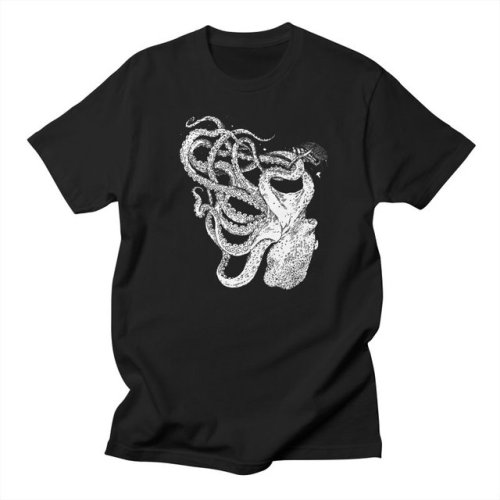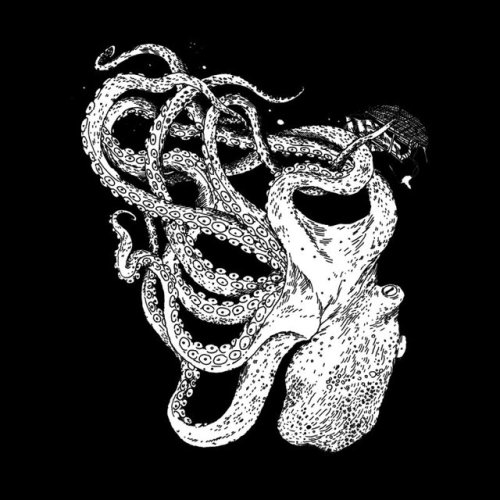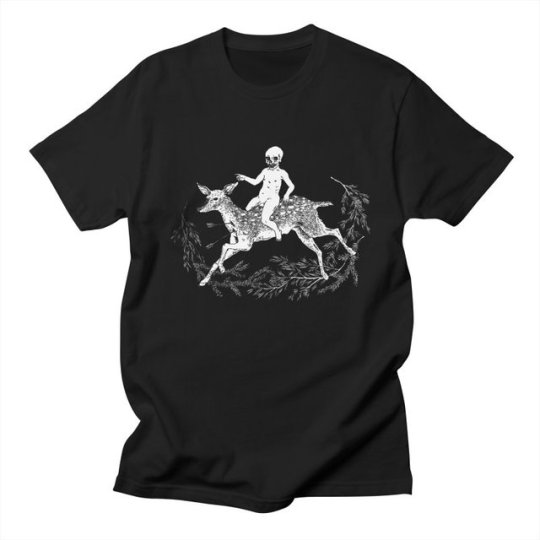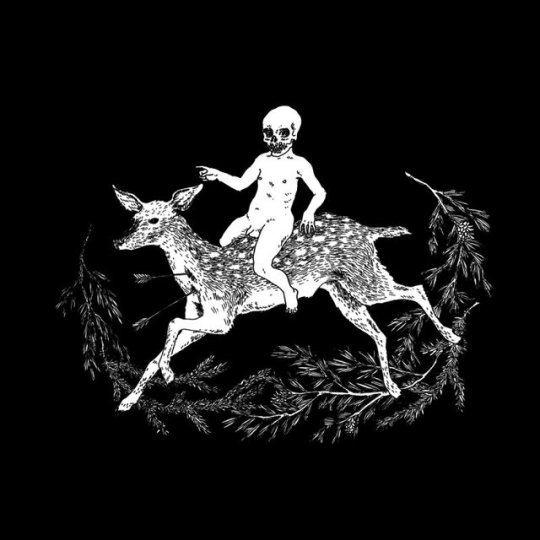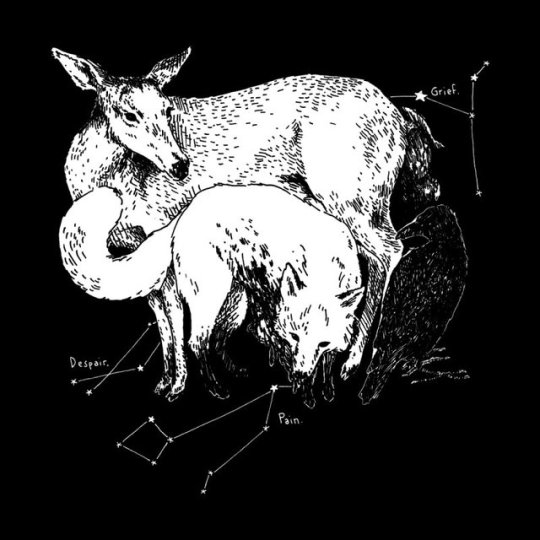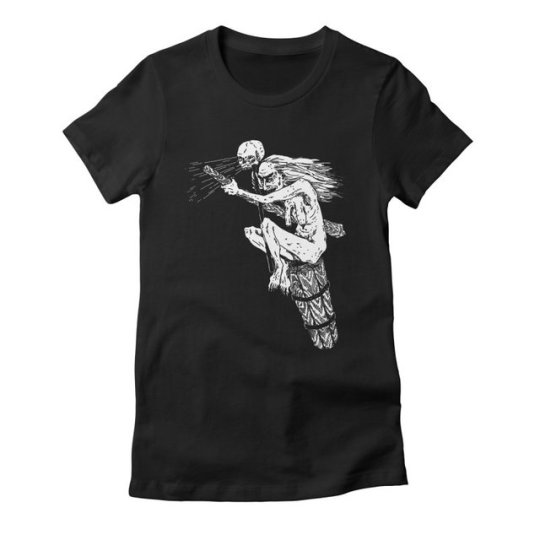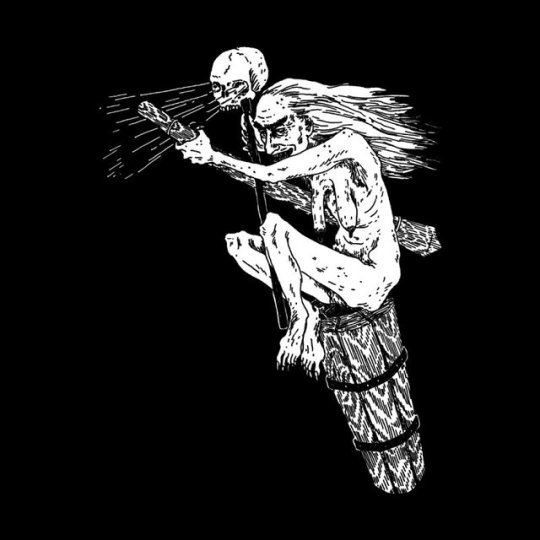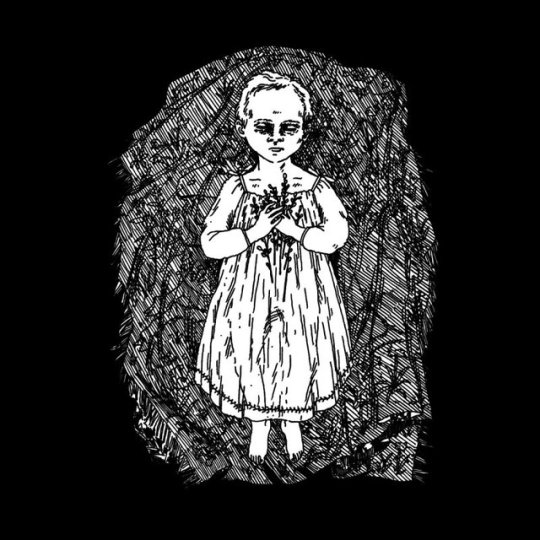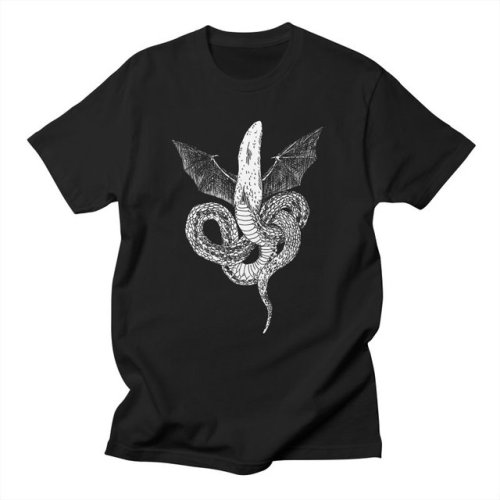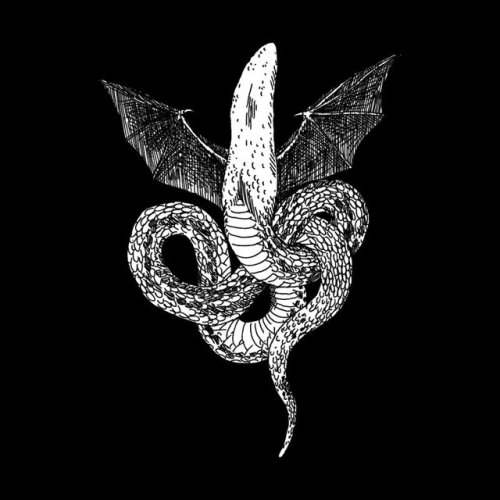Posts Tagged ‘horror’
“Mindhunter” thoughts, Season One, Episode Seven
October 21, 2017To paraphrase the great Yakov Smirnov, on Mindhunter, case cracks you!
I reviewed episode 7 of Mindhunter, in which the team meets cartoonishly nasty serial killer Jerry Brudos and starts to lose their shit because of it, for the A.V. Club. I get why the show did what it did here—I just don’t enjoy it as much.
31 October T-Shirts by Julia Gfrörer, Day 20: Full Moon
October 20, 2017“Mindhunter” thoughts, Season One, Episode Six
October 20, 2017But once again, Mindhunter refrains from the mistake it made in its earliest episodes, where Tench and Ford’s boss was a mouthpiece for outdated and ignorant views—a convenient obstacle to be overcome by the real visionaires. It’s true that the D.A. doesn’t quite grasp the complex interplay of impulses and triggers that shaped Benjy, Frank, and Rose’s respective involvement in the murder and its aftermath. But it’s not that he can’t understand it, or doesn’t want to understand it. Wendy, Holden, and Bill simply haven’t figured out how to express it in a way that will get a guilty verdict out of a jury. When Wendy asks him “How do we translate this so you can use it?”, it’s neither a rhetorical question nor a passive-aggressive dig—she really wants to find a way to make their findings useful outside the laboratory conditions of their office.
And when the D.A. approaches them after allowing Frank to cop a plea, he’s sincere when he tells them why his hands were tied. It’s a utilitarian numbers game—“the lowest cost for the highest quality justice”—and he couldn’t take the risk of confusing a jury and letting justice of any kind slip away. Even when Holden and Bill grumpily reject his offer to take them out for dinner by way of an apology, they still shake his hand when he offers it. There are no hard feelings. How can there be? “What difference does any of this make if we can’t communicate it to the people who matter?” Holden asks Bill before they drive away. “I don’t know,” Bill sighs. Their own uncertainty about the trail they’re blazing makes them more forgiving when others demur from following.
I reviewed episode six of Mindhunter for the A.V. Club. Solid and thoughtful.
“Mindhunter” thoughts, Season One, Episode Five
October 20, 2017The late great Halt And Catch Fire famously took a while to actually become great. It got there because its writers figured out a new way to create personal and professional dilemmas for its characters. Rather than present black-and-white choices in which someone was clearly in the right and someone else in the wrong, or follow the shades-of-gray antihero-drama approach where the interest lies in studying why people do the wrong thing to begin with, Halt took a third route: It constructed scenarios in which the protagonists faced two equally compelling options and had to choose between them with no clear-cut right answer at all. For example, should they gut the creative innards of their new computer, lowering the price tag and guaranteeing competitiveness in the marketplace at the expense of what made the product special? Or should they keep their innovative interface intact and take a shot at something great, risking not just their livelihoods but those of everyone who worked for them in the process? Each path had its partisans, each argument was persuasive, and in the end they had no more idea of what would be best than any of us do when we face turning points in our own real lives. The show’s total lack of hand-holding for either its characters or its audience made for riveting viewing.
I thought about this a lot while watching this episode of Mindhunter. Focused almost exclusively on the murder and mutilation case that Bill Tench, Holden Ford, and local cop Mark Ocasek started working in the previous installment, it’s the story of three investigators hashing things out as they go, testing competing theories of the crime with no slam dunks in sight. It’s not about winnowing out false leads until the one true answer is found—even though they make an arrest by the end of the hour, the exact circumstances of the killing remain a mystery. Rather, it’s about trying to figure things out in a field, and a world, where there are no sure things. It’s a very different way to write a procedural.
I reviewed episode five of Mindhunter for the A.V. Club. It’s become a much better show. There are still music-cue misfires and problems with Debbie galore, but it’s settled into a highly watchable groove, particularly if you’re a serial-killer buff and are interested in seeing how the conventional wisdom got hashed out conversation by conversation.
31 October T-Shirts by Julia Gfrörer, Day 18: Sea Monster
October 19, 2017“Mindhunter” thoughts, Season One, Episode Four
October 19, 2017Twitter is a portal straight into hell, but every so often a li’l angel of insight manages to spread its wings and fly out of its maw. So I offer a sincere thank you to the twitter userwho put into words something I might not have been able to put my finger on otherwise: The more like a procedural Mindhunter becomes, the better it gets. Sure enough, the show’s fourth episode spends nearly all of its time watching Holden Ford, Bill Tench, and their new partner Wendy Carr at work, and it’s the best episode yet.
I reviewed episode 4 of Mindhunter for the A.V. Club. It’s like VH1 Classic Albums, but about the concept of serial killers.
“Mindhunter” thoughts, Season One, Episode Three
October 17, 2017Kemper [is] back for another round of interviews so thick with gallows humor you can almost see the nooses. “Big Ed” had a sick sense of humor during his murders, one he can’t help but chuckle about to himself as he recounts the details to Bill and Holden—like how he shoved his mother’s severed vocal cords into the garbage disposal to shut her up permanently, or how he buried the decaptiated heads of his victims face up near her window, because “Mom always liked people to look up to her.”
These exchanges say a lot about both the killer and his questioners. Ed thinks he’s winning them over with his gruesome gags, but he’s really revealing the depths of his disregard for other people: The women he killed meant nothing more to him than becoming potential punchlines for sick jokes played at his hated mother’s expense. Bill and Holden, meanwhile, react with the reluctant but irrepressible exclamations you might hear from the crowd at comedy club where the stand-up said something particularly off-color—until they get to their car afterwards and simply stare at each other in disbelief. They’re good enough at their jobs to instinctively transform their shock and disgust into reactions that will keep them on Ed’s good side, so they can keep getting what they want from him in turn.
Bill spells all this out to Holden on the flight home, in one of the show’s best conversations yet about the nature of their job. “There’s nothing behind Kemper’s eyes,” he says. “It’s like standing near a black hole. And he thinks we’re his friends!” He pauses. “Well, he thinks you’re his friend.” Then he leans in to Holden for the conclusion: “Which makes you a pretty great FBI agent.” These guys are uniquely equipped to gaze into the abyss without its returning gaze getting the better of them, for now at least.
I reviewed episode three of Mindhunter for the A.V. Club. It’s improving for sure, but the conversations that don’t include serial killers still sound like they were written by aliens.
31 October T-Shirts, Day 17: Ghost of an Abandoned Child
October 17, 2017Wet Nightmares: a conversation with the editors of erotic horror comics anthology ‘Mirror Mirror II’
October 16, 2017What are your thoughts around criticisms of erotic horror as a genre that sensationalizes and glorifies violence, or abstracts violence as an idea rather than damage done to real people?
J: In my life I’ve experienced and witnessed enough violence that I don’t consider my feelings about violence to be an abstraction. My experiences are my experiences. My responsibility to write something honest takes priority.
I think we we can be overzealous in condemning creators for making work about trauma – Sean and I are both abuse survivors, but we’re sometimes criticized for insensitivity towards sexual violence and doing harm to survivors in that way. And no doubt many of those critics are survivors too. It’s tiresome to have to produce a resume of trauma to prove you’re allowed to discuss it, and when you do you get it from the other side – from people who think you’re too close to the subject to handle it well. What I’m getting at is that there’s no correct way to deal with violence in art, and what harms one reader can be healing to another. I’d rather give artists the benefit of the doubt.
S: Julia pretty much says it all here. I’ll just add that it goes back to what I said earlier about different approaches within horror – similarly, there are different ways to address and convey the pain and suffering experienced by real people. Certainly my work as a writer and now as an editor is an attempt to do so, with my own pain just for starters. The great power of fantastic fiction of all kinds, perhaps horror most of all, is that it can give voice to everyday feelings, emotions, and experiences the magnitude of which is beyond the ability of everyday language to express.
My partner and co-editor Julia Gfrörer and I spoke to Minh Nguyen about our comics anthology Mirror Mirror II for AQNB. I’m ashamed of myself for not thinking of “Wet Nightmares” sooner.
“Mindhunter” thoughts, Season One, Episode Two
October 15, 2017Edmund Kemper is not your average pop-culture serial killer. That’s the point. Mindhunter’s second episode may be dogged by many of the same problems as its premiere—we’ll get to that later—but its decision to cast “The Co-Ed Killer” at the Hannibal Lecter to restless FBI Agent Holden Ford’s Clarice Starling is as smart and sinister as the man himself. Played by actor Cameron Britton, whose performance is already one of the most chilling of its type, Kemper is the embodiment of Ford’s argument that this new breed of killer is too crazily complex for the existing rulebook to cover.
The “we’ll get to that later” is doing a lot of work in the above paragraph, but nevertheless I enjoyed the Ed Kemper material in episode two of Mindhunter, which I reviewed for the A.V. Club, a great deal. Just be prepared for my very different thoughts on the music cues and the female lead.
31 October T-Shirts by Julia Gfrörer, Day 14: Three Beggars
October 14, 2017“Mindhunter” thoughts, Season One, Episode One
October 14, 2017“It’s not like there’s some magical machine that makes identical copies of things.” To its eternal credit, Mad Men got the single worst line of dialogue in the entire series out of the way in its pilot episode. Don Draper’s brief aside about the state of the art in office equipment functions as a gag only from the perspective of its 2007 audience, at the expense of its 1960 characters. What we know, and what Don doesn’t, is that of course there are magical machines that make identical copies of things, or that there will be eventually. The poor sap has the temerity not to have journeyed via time machine to an era where photocopiers are a thing. Joke’s on you, buddy!
I thought of this line a lot while watching Mindhunter, Netflix’s new serial-killer procedural from writer-creator Joe Penhall and producer-director David Fincher. The difference is that while Mad Men relegated its “look at these troglodytes who haven’t even heard of Xerox yet” hindsight to one brief, bad joke, it’s Mindhunter’s entire premise.
Based on the influential true-crime book Mind Hunter: Inside The FBI’s Elite Serial Crime Unit by Mark Olshaker and John E. Douglas, and featuring analogues for Douglas and his fellow Fed Robert K. Ressler, it chronicles the birth of criminal profiling and the concept of the serial killer as we know them, during an era when law enforcement’s skepticism of such notions—and of psychology in general—was ingrained and endemic. In other words, it’s a war story written from the perspective of the winners, one which enlists its audience as recruits for the retrospectively inevitable victory. That’s the problem, really: It’s a tale of bone-deep uncertainty in uncharted territory, told with the quiet confidence of a sure thing.
I’m covering the first season of Mindhunter for the A.V. Club, where believe it or not I’ve never written about television before! Here’s my review of the premiere, which helped me realize there’s basically a whole subgenre of “based on a true story” that I don’t care for: the origin of something everyone thought was wrong but which we in the audience know turned out to be right. Also, you gotta hear the dialogue in this thing. It’s like an alien wrote it.
31 October T-Shirts by Julia Gfrörer, Day 12: Baby Mandrake
October 13, 201731 October T-Shirts by Julia Gfrörer, Day 11: Baba Yaga
October 12, 2017STC x Drunk Ed: MONSTERS
October 9, 2017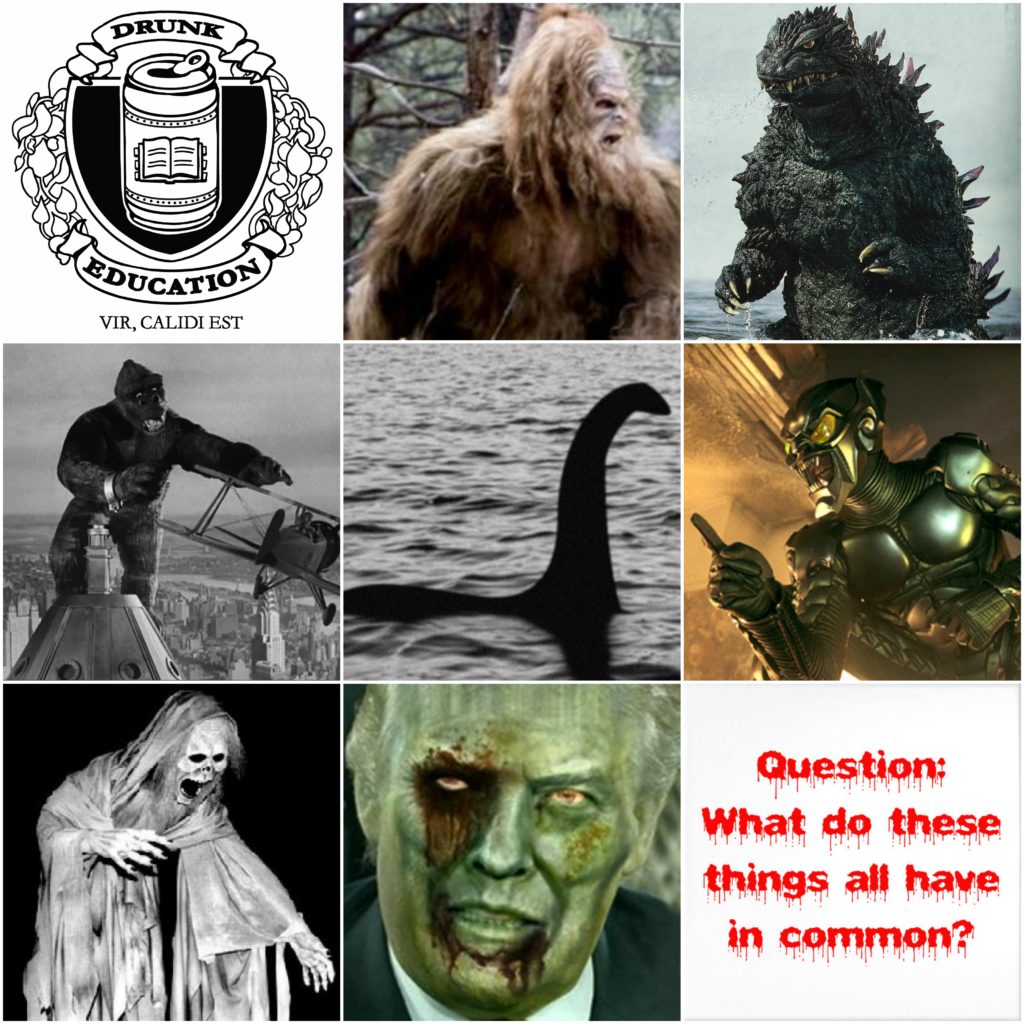
Wanna see something really scary? I’ll be giving a talk about Clive Barker as part of “Monsters,” the latest in the Drunk Ed lecture series. It’s happening this Wednesday, October 11th, from 8-10p at Littlefield, 635 Sackett Street, Brooklyn. The other speakers include Meredith Graves, Arabelle Sicardi, and Eric Thurm (I think merritt k had to bail but who knows), so come on by!
31 October T-Shirts by Julia Gfrörer, Day 09: Truth Obscured
October 9, 201731 October T-Shirts by Julia Gfrörer, Day 07: Baby Baphomet
October 7, 201731 October T-Shirts by Julia Gfrörer, Day 05: Dead Hope
October 5, 2017‘The Punisher’: Everything You Need to Know About Marvel’s Vigilante Antihero
October 4, 2017Punisher comics have gotten pretty weird over the years
We know what you’re thinking: Gun-toting combat veteran goes kill-crazy against criminals after they murder his family – this concept is pure meat-and-potatoes street-level stuff, right? But we’re talking about superhero comics, folks. After a few decades of near-continuous publication, pretty much every character gets pushed out of his or her comfort zone, and our the Punisher is no exception.Among his strangest adventures? The Punisher: Purgatory (1998-99), in which the then-dead vigilante was revived to serve as an angelic demon-slayer. The similarly supernatural FrankenCastle arrived a decade later; this knowingly screwball storyline saw the antihero, who had been killed once again, brought back as a Frankenstein-like monster, fighting alongside horror-tinged characters like Morbius the Living Vampire and Man-Thing. (In a word: No.) In 2012, the character got a sci-fi makeover in Space: Punisher – which featured, yes, the Punisher in space, punishing aliens and whatnot.
Years before his character-defining run on the character, Garth Ennis wrote the one-shot Punisher Kills the Marvel Universe, which pretty much does what it says on the tin. The 1995 special chronicles a short, bloody alternate timeline in which Castle’s family gets killed in the crossfire of an X-Men/Avengers battle, leading him to slaughter every single superhero and supervillain in the company’s catalog. He eventually turns the gun on himself. But for sheer WTF-itude, nothing beats 1994’s Archie Meets the Punisher, a crossover between Marvel’s bloodiest antihero and Betty, Veronica, Jughead and the rest of the Riverdale gang. Sure, it’s just a footnote in Punisherology, but crazy stunts like this are exactly what brought Archie back to pop-culture prominence over two decades later. A crossover between the Netflix Punisher show and Riverdale doesn’t sound completely out of the question now, does it?
In anticipation of the upcoming Netflix/Jon Bernthal series, I wrote a guide to the Punisher’s many multimedia incarnations for Rolling Stone. One thing this reminded me is that the showrunner is Steve Lightfoot, who was the Ed Burns to Bryan Fuller’s David Simon on Hannibal. That bodes well.



